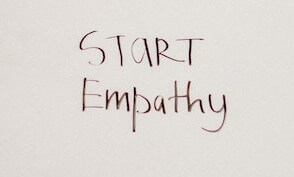Understand Generational Differences: Guidelines and Resources
© Copyright Carter McNamara, MBA, PhD
Sections in This Topic Include
- What Are Generational Differences?
- Overview of Perceived Differences Between Generations
- Are Generational Differences a Myth?
- Guidelines for Managing Different Generations
Also consider
Related Library Topics
What Are Generational Differences?
What is a Generation?
Before we go on to discuss any perceived differences between generations, as well as those who believe that the differences are a myth, let’s understand what the term “generation” means.
The Center for Generational Kinetics defines a generation as:
“… a group of people born around the same time and raised around the same place. People in this birth cohort exhibit similar characteristics, preferences, and values over their lifetimes.”
Wikipedia defines a generation as:
“all of the people born and living at the same time, regarded collectively” and “the average period generally considered to be about thirty years, during which children are born and grow up, and begin to have children of their own.”
What Do We Mean by Generational Differences”?
There appear to be differences in the values, beliefs and opinions between different generations of people. While some believe strongly in the differences, others believe they are a myth. Those believing in the differences assert that they are important to recognize and accommodate, especially in settings having multiple generations, such as in today’s workforce.
What do we mean by generational differences? Wikipedia gives a useful definition that can contribute to our understanding. The definition is of a generation gap, a phrase often used when referring to generational differences:
A generation gap or generational gap is a difference of opinions between one generation and another regarding beliefs, politics, or values.
Overview of Perceived Differences Between Generations
What Are the Different Generations?
There are different perspectives on their names and the range of dates for their births, including between different countries. The Center itemizes the following categories in its Generational Breakdown: Info About All of the Generations:
- Traditionalists or Silent Generation – 1945 and before
- Baby Boomers – 1946-1964
- Generation X – 1965-1976
- Millennials or Gen Y – 1977-1995
- Generation Z or iGen or Centennials – 1996-now
(At least one source refers to Gen Y and Gen Z as the Millennials.)
What Are the Perceived Differences?
The Generational Differences Chart gives a concise comparison of the first four categories of generations. For the sake of discussing generational differences in leadership, management and the workforce, we’ll focus especially on the Chart’s aspect of “Preferred Work Environment”.
- Traditionalists value workplaces that are conservative, hierarchical and have a clear chain of command and top-down management.
- Baby Boomers value workplaces that have flat hierarchies, democratic cultures, humane values, equal opportunities, and warm and friendly environments.
- Generation X values workplaces that are positive, fun, efficient, fast-paced, flexible, informal and have access to leadership and information.
- Millennials value workplaces that are collaborative, achievement-oriented, highly creative, positive, diverse, fun, flexible and continuously providing feedback.
- Forbes adds that Generation Z is motivated by security, may be more competitive, wants independence, will multi-task, is more entrepreneurial, wants to communicate face-to-face, is truly digital- native and wants to be catered to.
The article The Key to Managing a Multigenerational Team: Don’t Overthink It mentions the results of research conducted by the Robert Half company among finance leaders. The great differences were in these three areas:
- Communication skills (30 percent)
- The ability to adapt to change (26 percent)
- Technical abilities (23 percent)
Regarding communication skills, Baby Boomers tend to be more reserved, Gen X favors command-and-control, Gen Y prefers collaboration and Gen Z prizes in-person communications.
Regarding change management, Baby Boomers are cautious, Gen X and Gen Y see it as a new opportunity, and Gen Z is accustomed to change and even expects it.
Regarding technical ability, Baby Boomers and Gen X value instructor-led courses and self-learning tools, while Millennials prefer collaborative and technology-centered options.
Are Generational Differences a Myth?
In the article The Myth of Generational Differences in the Workplace, researcher Jennifer J. Deal argues that working-age generations value the same thing. Everyone wants a good relationship with their supervisors, are cautious of change, appreciate feedback and work the number of hours that corresponds to their role in the organization. She argues that differences between generations have much more to do with dealing with the extent of authority between generations, especially in families and at work.
The article Generational Differences: Myths and Realities mentions research findings that employees from different generations have a lot in common and that differences exist because of external factors such as global demographics, education and living costs, and other economic factors.
This article A 5-Year Study Reveals the Truth About What Each Generation Wants in the Workplace (It’s Not What You Think) mentions that a large study by the Hay Group found that differences between generations have more to do with the stage of development of employees, as opposed to their generation.
- Why Generational Differences Are a Workplace Myth
- The Real Truth About Generational Differences
- Intergenerational BS – People Are People
- An Age-Old Challenge: Multigenerational Teams
Guidelines for Managing Different Generations
Regardless of whether there are major differences between generations, problems can arise especially when perpetrating negative stereotypes of generations, for example, that traditionalists are rigid, baby boomers fear technology and millennials don’t work hard.
- Instead, ask each person about what they value in the workplace and how they prefer to work.
- During individual employee performance review meetings, respectfully ask each employee what could make the workplace even more supportive for them.
- Communicate to people according to their preferred communication styles.
- As much as practical, customize their work according to their preferences.
- Recognize your own biases. We all have them and they can greatly affect what we see — and don’t see — in the workplace.
- Understand that there are numerous different motivators and each person might be motivated by something quite different than another.
- Arrange ways for people from different generations to meet each other. That is one of the most powerful ways for people to overcome differences.
- Notice increasing frustrations and conflicts in the workplace. Ask for ideas from people from different generations to notice any patterns in the causes.
- Avoid talking about generational stereotypes. That can be offensive to many. People want to be recognized for their individuality.
- Use a leadership style that is participative and consensus-oriented, and explain the benefits of using that style.
- The Key to Preventing Generational Tension Is Remembering That Everyone Wants to Feel Valued
- How to Manage Generational Differences in the Workplace
- Tackling 4 Key Challenges of the Multigenerational Workforce
- Three Common Multi-Generational Workplace Problems (And How to Solve Them)
Also consider
- Building Trust
- Communications (Interpersonal)
- Communications (Organizational)
- Communications (Writing)
- Conflict (Interpersonal)
- Etiquette (Manners)
- Handling Difficult People
- Diversity and Inclusion
- Negotiating
- Office Politics
Learn More in the Library’s Blogs Related to This Topic
In addition to the articles on this current page, also see the following blogs that have posts related to this topic. Scan down the blog’s page to see various posts. Also see the section “Recent Blog Posts” in the
sidebar of the blog or click on “next” near the bottom of a post in the blog. The blog also links to numerous free related resources.
- Library’s Coaching Blog
- Library’s Crisis Management Blog
- Library’s Leadership Blog
- Library’s Supervision Blog
For the Category of Interpersonal Skills:
To round out your knowledge of this Library topic, you may want to review some related topics, available from the link below. Each of the related topics includes free, online resources.
Also, scan the Recommended Books listed below. They have been selected for their relevance and highly practical nature.










